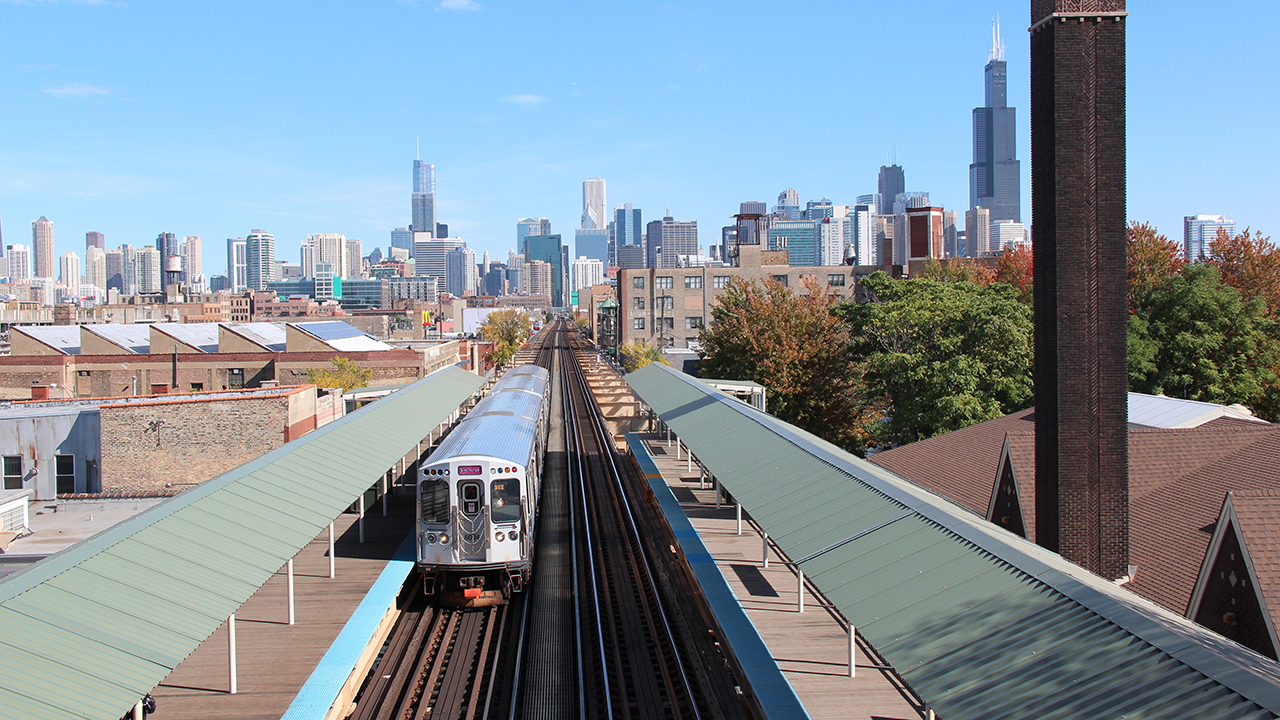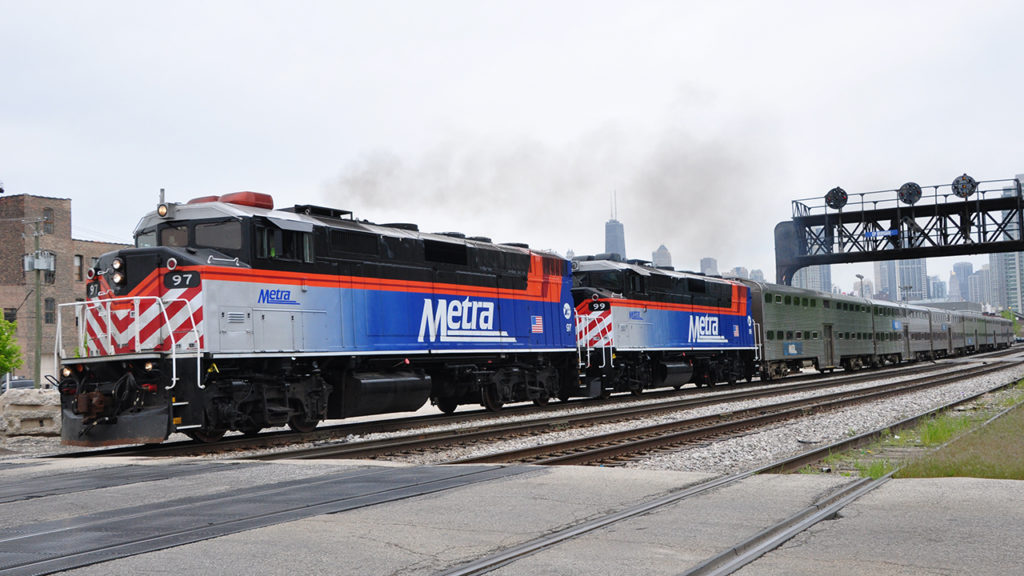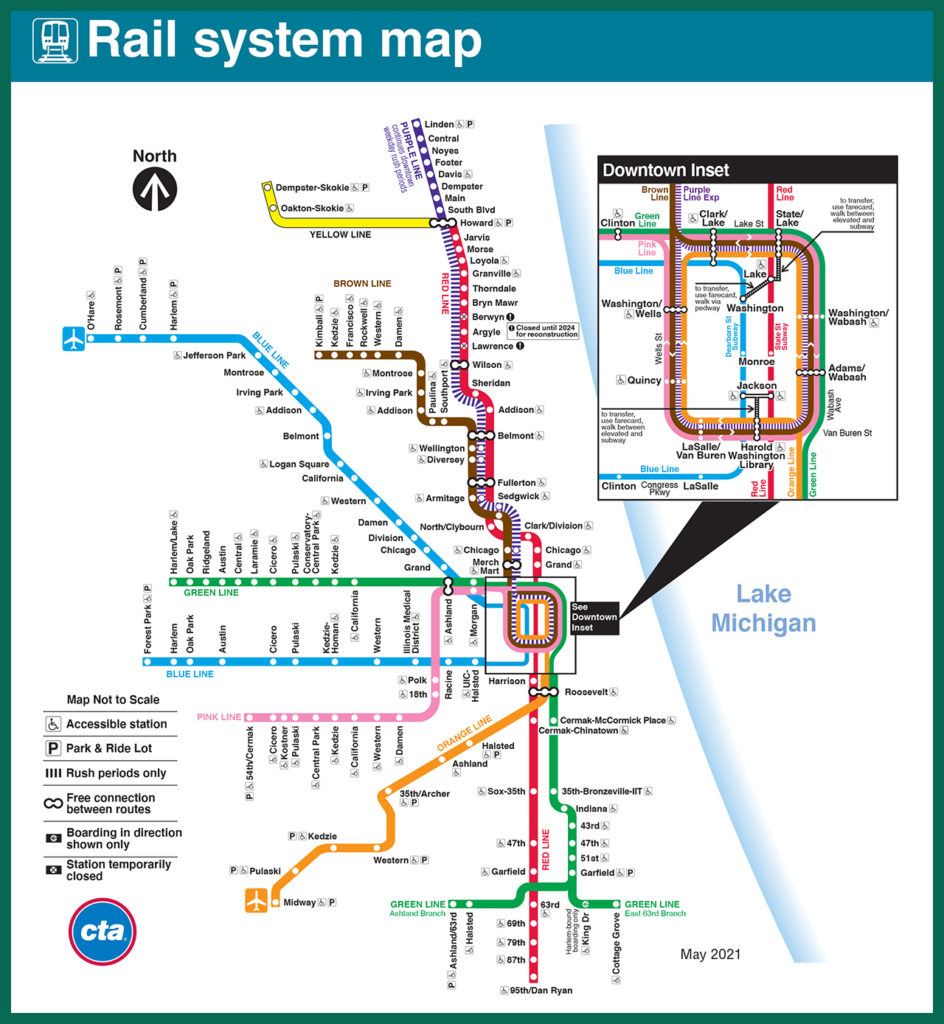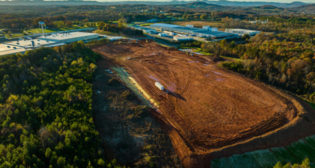
Hub of the Midwest
Written by David Peter Alan, Contributing Editor
CTA photo
RAILWAY AGE SEPTEMBER 2022 ISSUE: Chicagoland is the nation’s freight rail hub, a status that also holds true for passenger rail. Amtrak, Metra, NICTD and the CTA have a symbiotic relationship in a complex network of lines and services that provides mobility to hundreds of thousands of people every day. Emanating from Chicago are intercity corridor services to Midwest points such as St. Louis, Detroit and Milwaukee, and long-distance trains to and from New York, New Orleans, Seattle, San Francisco and Los Angeles. Commuter rail lines stretch north, west and south (east is Lake Michigan, can’t go there!) throughout the region. NICTD, known to locals as the South Shore, connects Chicago with South Bend, Ind. And the CTA, with its famous elevated Loop, serves the inner city as well as both major airports, O’Hare and Midway. — William C. Vantuono, Railway Age Editor-in-Chief
For this overview of rail in the Windy City, I could not have thought of a better lead-in to describe the variety of trains and rail transit in the Hub of the Midwest. With the Chicago Transit Authority (CTA) and its eight-line local rail system, Metra trains throughout Chicagoland, the Northern Indiana Commuter Transportation District South Shore Line to Indiana, and more than a dozen Amtrak corridor-length and long-distance routes, Chicago and the region present a variety of rail experiences and useful mobility for residents and visitors alike.
Since its founding almost 200 years ago, Chicago has exhibited a gritty, “get-it-done” character. More than a century ago, poet Carl Sandburg described it as the “Player with Railroads and the Nation’s Freight Handler” and the “Hog Butcher for the World.” Chicagoans do pretty well with cattle, too. Italian beef is the city’s signature sandwich.
It’s not just freight. People go to Chicago and get around there by rail, too. The city is known for its museums and other cultural institutions, as well. It is also famous for its classic downtown buildings and other historic neighborhoods.
It’s not just people who came from Europe who give Chicago its diversity. During the period of the Great Migration, African American Southerners escaped the misery they were enduring in that region and gave Chicago’s South Side some additional Southern flavor. If they came from New Orleans, Jackson or Memphis, they might have made the one-way trip on the Illinois Central, the route of Amtrak’s City of New Orleans today.
Chicago also has a neighborhood called Pilsen, but the heritage of its inhabitants is that of Mexico, not the Czech Republic. Put it all together, and Chicago is an interesting place to visit, while millions choose to live there.
I first visited Chicago in 1969. I wanted to experience the rail scene, and I took Penn Central’s old Lakeshore Limited, which had temporarily lost its official name at the time. I got off at the old South Bend Union Station and walked a few blocks to catch the South Shore Line on its street-running track on LaSalle Street. Less than a year later, the downtown track was gone. When I arrived in the Windy City, I caught a train of 1920s-vintage 4000-series cars on the CTA’s Evanston Express. At that time, there were no stops between the Loop and Howard Avenue on the North Side, and the conductor came around to collect an extra fare. We dropped coins into a device he held in his hand, and it rang a bell.

There was a lot more passenger rail activity at the time, run by a large number of railroads. According to an Official Guide from that time, there were nine railroads running commuter or other regional service (now Metra on the Illinois side), 10 running corridor-length routes, and another 11 running long-distance trains, with several routes running more than one daily frequency. Some long-distance trains ran over track on several railroads during the pre-Amtrak era, too. There is much less passenger rail activity now than there was then, but Metra keeps local service going, while Amtrak runs six corridor-length routes and eight long-distance routes, six of which run daily at this writing. Chicago still has more passenger rail activity than most cities, and you can still take Amtrak there from 262 other places.

To get around the city, visitors and Chicagoans alike use the CTA. The agency is celebrating its 75th anniversary on Oct. 1. Transit in Chicago goes back much further, though. Chicago’s famous elevated (or “L”) lines were built in the 1890s, and the South Side Elevated Railroad took visitors to the Columbian Exposition in 1893, one year late to celebrate the 400th anniversary of Christopher Columbus’s first voyage. Today’s system has eight lines, reaching as far north as Evanston (home of Northwestern University), as far west as Oak Park (famous for buildings designed by Frank Lloyd Wright) and as far south as 95th Street, with an extension planned that would take the Red Line to 130th Street, as part of the CTA’s “Red Ahead” program.
Chicago is the only city in the nation with elevated lines running downtown. Nowhere else can a “local” or visitor sit on the train and watch buildings go by from the level of the third floor. Lake Street, Wells Street, Van Buren Street and Wabash Avenue are the streets under the Loop, where trains first ran in 1897, and which forms part of most of the CTA’s lines. The Loop is a tourist attraction in its own right, and has been a part of Chicago’s cultural history and lore ever since. Legendary jazz cornet player Bix Beiderbecke formed a band with Frankie “Tram” Trumbauer and some of his other friends in 1927, and called it the Chicago Loopers, even though they were playing in New York at the time. In the Windy City itself, Bix was known to have jammed with Louis Armstrong and other New Orleans greats, even though they were not in a position to play gigs together due to the segregated nature of much of the music business at the time.

The CTA extends beyond the Chicago city limits in places like Evanston and Skokie to the north and Oak Park to the west. There is much more to Chicagoland, as the locals call it, and Metra trains go to those towns. Metra is a large system, the result of consolidating local services that were once operated by eight different railroads. Metra operates trains on several different railroads today, by contract. They include BNSF (historic Burlington Route) and Union Pacific (historic C&NW). Other Metra lines run on former railroads (historic Milwaukee Road and Rock Island). Metra stays within the State of Illinois, except for a few trains on the UP North Line that venture up to Kenosha, Wisc. Only the three lines to the South Side that were historically operated by the Illinois Central are electrified.
Schedules vary greatly between lines, and most of the service reductions that were implemented in the wake of the decreases in ridership caused by COVID-19 are still in effect. Three lines run during commuting-peak hours only. The smallest amount of service runs on the Heritage Corridor to Joliet, historically part of the Alton Road and running near the route of the Illinois & Michigan Canal. The line hosts only three commuter trains into Chicago in the morning and back to Joliet in the late afternoon, although Amtrak uses the route for the Texas Eagle and Lincoln Service trains to St. Louis. This summer, Metra is running three round trips on the line on Saturdays, which gives Chicagoans a rare opportunity to take a day trip to visit the historic towns along the line.
The typical service patterns outside peak-commuting hours call for either hourly service or a train every two hours on weekdays, depending on the line. The one exception: the Big Noise from Winnetka (on the UP North Line) is that there are now two trains per hour between there and Chicago during the mid-day on weekdays. That appears to be an experiment to determine whether increased service will bring commensurately increased ridership. Otherwise, Metra has not followed the lead of the MBTA in Boston of increasing mid-day and evening service while running fewer trains during historic peak-commuting hours. On weekends, the standard is every two hours, similar to Boston and now Philadelphia, but less than the hourly service typical of the New York area.
Indiana has not been a hotbed of passenger rail activity since the demise of the old interurbans decades ago. There is one line between Chicago and the Hoosier State: the NICTD South Shore Line, with a nickname that has survived since it was the Chicago, South Shore & South Bend. The line is electrified, using the part of Metra’s electric (historically the Illinois Central Electric) line between downtown and Kensington, at 115th Street on the South Side. There is not much service, trains only run every two hours or less to and from Michigan City outside peak-commuting hours, although there are a few that only run between Chicago and Gary. There is now a construction project to double-track part of the line as far east as Michigan City, so there might be more service there in the future. A casualty of that is the historic street-running portion of the line in Michigan City.

There are only five daily trains to South Bend, and none of them go near downtown. Instead, they go to the airport. Many of those trains have no local bus connection to downtown South Bend, a problem that we noted when reporting on Transportation Secretary Pete Buttigieg’s policy when he was South Bend’s mayor. The headline was Complete Streets, Incomplete Transit, and the situation has not changed much.
Indiana’s only recent state-supported train, Amtrak’s four-day-a-week Hoosier State, was discontinued in 2019, when the state killed its funding. It ran between Chicago and Indianapolis on the four days a week that the Cardinal, running through West Virginia and Virginia mostly on the historic Chesapeake & Ohio route, did not. The South Shore Line is planning to build a new branch from Hammond to Dyer, which is on the Cardinal route. Advocates at the Indiana Passenger Rail Alliance (IPRA) hope to see a “Hoosier Corridor” with more-frequent service to Indianapolis, while avoiding the Amtrak route to Union Station. They also hope that trains will someday run to Cincinnati, Louisville and even Nashville.
The State of Illinois, through the Illinois Department of Transportation (IDOT), remains a leader in running intrastate corridors through Amtrak. There are currently three routes in operation. Lincoln Service trains run four times a day between Chicago and St. Louis, on UP (the historic Alton Route) through Springfield and Lincoln (a town that was named after Abraham Lincoln before he became President). The Texas Eagle also runs on that route. At this writing, Amtrak has suspended one round trip between Chicago and St. Louis.
On the normal schedule, there are also two round trips between Chicago and Carbondale on CN (historic Illinois Central route), along with the City of New Orleans. At this writing, one of those round trips is suspended. The line serves Southern Illinois University in Carbondale and the University of Illinois at Urbana via a local bus from Champaign. The third Illinois operation runs between Chicago and Quincy, on the Mississippi River. There are two round trips per day on that route.
Illinois and Wisconsin combine to run service to Milwaukee, seven times a day (six on weekends). There is an additional train from Chicago on Friday nights that returns from Milwaukee early on Saturday mornings. There are efforts to add three daily frequencies to the schedule, but local opposition along the part of the line in Illinois is holding up the increase. Other trains go from Chicago to Michigan. There are three daily round trips on the Wolverine route to Pontiac, through Detroit on the historic Michigan Central route. Another train, the Blue Water, splits from the Detroit service at Kalamazoo and goes to Port Huron on the historic Grand Trunk Western route, part of CN. There was once a through train between Chicago and Toronto, using CN in Canada, but there is no longer any connection between the Amtrak side and the VIA Rail side in Ontario. The other train is the Pere Marquette to Grand Rapids, a single daily frequency, named for the railroad that was named for the French explorer.
The roster of Amtrak’s long-distance trains serving Chicago has not changed in years, but frequencies have. The Empire Builder to Portland and Seattle, the California Zephyr to the Bay Area, the Southwest Chief to Los Angeles, the Texas Eagle to San Antonio, the Capitol Limited to Washington, D.C. (via Pittsburgh), and the Lake Shore Limited to New York and Boston have all returned to daily operation, at least for now. The Cardinal to Washington and New York (through Cincinnati and West Virginia) still runs on the tri-weekly schedule, as it has for more than 40 years. The City of New Orleans still runs only five days per week, although Amtrak claims that it will return to daily operation on Oct. 2.

Brand new Siemens Charger locomotives, powered with Cummins QSK-95 prime-movers, are hauling many Amtrak state-supported Midwestern corridor trains. Larry Gross photo
On the whole, it was not been a good summer for Amtrak’s long-distance trains. Consists are shorter, either because certain cars (like lounge cars) have been removed on a regular basis, or because of other equipment shortages. Advocates have complained that equipment is piling up in the Beech Grove shops in Indiana, while Amtrak asserts that it is short of crews and other employees. The advocacy community seems to hope that better times are coming for Amtrak, while also fearing that we are witnessing the beginning of the end.
That doesn’t mean that now is not a good time to visit Chicago. The winters are cold there, and there is a lot to do in the summer and fall. Exactly 100 years ago, Fred Fisher wrote the song Chicago, which became the city’s unofficial anthem for a while. He called it “that toddlin’ town” and advised, “Bet your bottom dollar you’ll lose the blues in Chicago, the town that Billy Sunday couldn’t shut down!” Maybe the famed evangelist of the era couldn’t shut down the speakeasies or the city’s legendary jazz scene at the time, but the Windy City seems more sedate today, even more than it was when I first visited there a bit more than 50 years ago.
Still, Chicago is interesting, historic and full of museums and neighborhoods worth visiting. You can still get there by train from a lot of other places around the country, and there is plenty of transit to get you around the city and Chicagoland on the CTA and Metra. The rail scene may not be quite as interesting as it was a half-century ago, but the Loop with its downtown “L” trains is still unique.
ADDITIONAL READING: A Rich Rail Transit History



